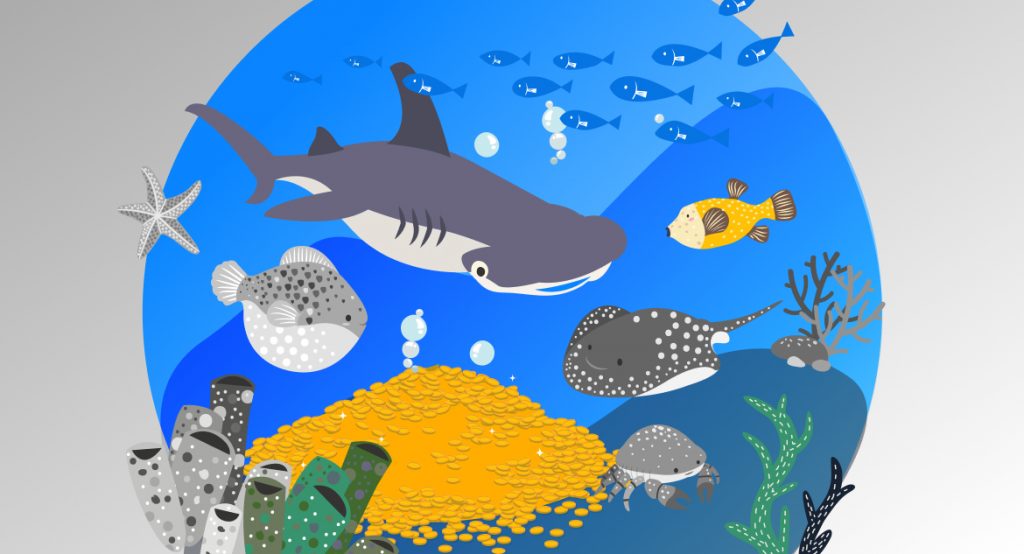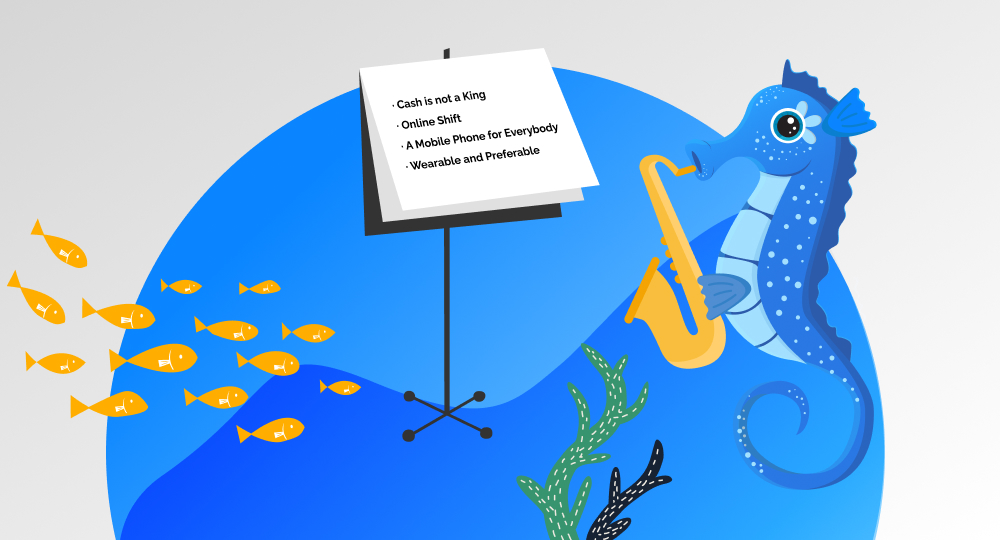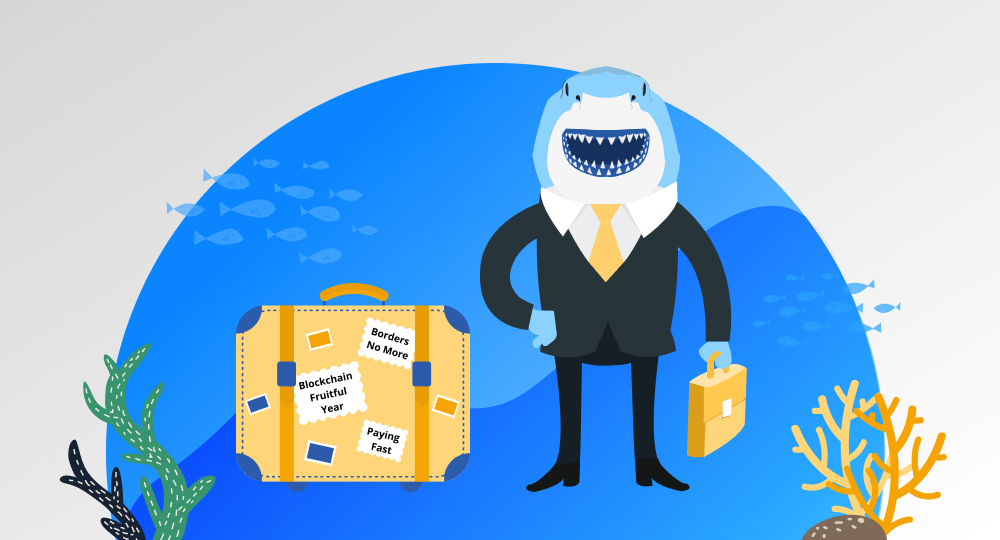In the year 2024, we value simple pleasures, like eating out or visiting a football match, much more devotedly than we used to. Our behaviors have changed greatly. Within a period of just a year, we have witnessed a great shift in the payment habits of the whole world. Such innovations in the payment ecosystem should have taken at least a decade to happen. Recent events have accelerated the updating process.
But the rule “no money, no honey” does still command our life. In our new article, we'll review the latest groundbreaking trends of payments.
written by:
Alexander Arabey
Director of Business Development
Contents
What Is the Payment Ecosystem?
The modern payment ecosystem is an interconnected system of correlated electronic equipment, banking organizations, and non-banking financial corporations which pave the way for transferring funds of different forms between a purchaser and a vendor.
How Do We Pay in 2024?
So, how do payments work these days? Cash or credit cards? Conventional online payment options or Bitcoins? The payment ecosystem of 2024 offers a huge amount of ways on how to buy and sell, supply and receive, donate, invest, save, and so on. From the times of gold coins till the latest innovations in payments, people have always wanted to make the payment process efficient, robust, and reliable, while at the same time fast, cheap, and simple. That is why modern banks and payment services are working to create new options as they have to fit in the latest expectations of their clients in the competitive field of payments.
FinTech, which is aimed to develop new methods of financial services, provides numerous technological solutions for financial institutions to keep up with that competition. Overall, the Global FinTech Market value is expected to reach $305 billion by 2025, and that is the growth at a CAGR of about 20%, which is going to be reached in just four years. It is a clear indicator of the growing interest and ambitions of all members of the payment processing sphere to modernize. What tendencies can we witness for all participants of the payment ecosystem game?
Payment Ecosystem 2024: Personal Level
Let’s have a closer look at payment ecosystems that serve individuals and help them to pay for various goods and services. When we want to buy something or pay for something, why not use cash as usual? Just bills and coins. Take it and pay with it. Simple, isn’t it?
But actually, this traditional payment method has a lot of steps to complete. Well, literally, at first you need to get some cash, which means that you should go to a bank or an ATM and withdraw some amount of local currency. Then you have to go to merchants or service providers and give them that cash. And you should get a receipt or a ticket, which is a legal document for payment approval. A refund, if needed later, should be requested during one more additional visit to the point of sale. Not that simple as it seemed, hah?
No wonder that more efficient modern payment methods have always been in great demand. Especially now, when social distancing has turned into a habbit. So, in the payment ecosystem from the perspective of an individual, we may reveal several tendencies for 2024.
1. Cash is Not a King
What do customers want? Imagine, you walk along the street and a musician is playing your favorite song. You really wish to show him your appreciation with some coins. But then you realize that there is no cash available in your pockets at that very moment. Wouldn't it be great to have a better modern solution? In other words, the old bulky way of cash payments is completely out of date with the fast pace of life we are witnessing these days.
COVID-19 became a turning point in the global shift to digitizing payment ecosystems. The share of cash payments made in the stores worldwide dropped to 20% in 2021 compared to the 30% rate just a year before that, and there is no evidence that this decline is going to stop. 66% of business owners stated that they are moving their business strategies towards a cashless future to meet the demands of their customers.
According to a recent survey conducted by Forbes Advisor in February 2023, only 9% of US residents use cash to pay for their purchases. Debit and credit cards have become the leading method of payment.
Virtual credit card payments became a norm for everyday use today from the terms of providing distancing regulations. The global virtual card market is projected to reach $65B by 2030, compared to $11.7B in 2021.
Governments across the globe are contributing to the promotion of digital cashless payments: many countries (Australia and Hong Kong, India and Indonesia, Malaysia, Philippines, Nordic countries, and others) are implementing initiatives in boosting financial inclusion.
The leading role in building a totally cashless economy is overtaken by Sweden: this year, they are going to finish using cash. By March 24, coins and banknotes of the krona will turn into collectibles. So, maybe, you should get some before it's not too late?
Will cash disappear in 2024? Probably not that fast, but the totally cashless future of the payment ecosystem does not look so incredible. To move this day closer, our advanced digital banking development team offers a wide range of contemporary solutions. What else do people need for payments?
2. Online Shift
One more cornerstone of payment methods that almost immediately appeared alongside the lockdowns and hasn't lost its popularity — customers turned to online services for practically everything. By the end of 2022 more than 2.14 billion people bought various goods and services online (in 2016 these numbers reached only 1.66 billion). Why visit a store when you have much better options? And according to Statista, 21.8% of all retail sales by that time are going to be made online. That means a strong request for developing even more advanced payment methods which will provide easy processing of all types of payments.
Online payments in very simple terms mean exchanging money online. This process involves several important components apart from merchants and customers, such as payment processors and payment gateways. In particular, payment processors manage the overall transaction process in the back, and payment gateways are responsible for collecting clients' payment information and passing it to the processors.
So, going online and turning to online payments implies the well-organized interaction of several parties. And there lies the main difficulty that many providers and merchants face, when their service is too slow or not user-friendly. Because 88% of e-commerce users stated their unlikeliness to return to a resource after a bad user experience. That is why an immediate, clear, and smooth payment process greatly influences the final success of e-commerce resources among their potential clients in 2024. The ultimate answer for all possible problems here — our top-quality UI/UX design service which can help you to get benefits from the positive online payments experience. But digital payments do not mean that customers can use only computers or laptops for transaction processing.
3. Mobile Phone for Everybody
In 2022 the number of mobile phone users reached 7.26 billion people, which means that today 91.6% of the world population owns a mobile device which is a substantial part of the payment ecosystem.
No wonder that such vast acceptance of mobile devices has led to the special interest in payment service technologies for mobile users from the banks, retailers, and service providers. It is not regarded as a magic trick anymore when you tap a terminal with your phone to pay. Our dedicated mobile app development services have huge experience in building the best-integrated services with modern payment advantages.
What could be even more compact and convenient for payment than a mobile phone?
4. Wearable and Preferable
And the answer to the question above is wearables. Different types of wearable devices are rising in popularity as reliable payment methods which are much more advantageous for everyday use than traditional bank credit cards or even smartphones. When you literally don't really need to take anything out of your purse or pocket, but only tap your smartwatch or smart jewelry for payment processing.
The wearable payments market globally was estimated just at $285.5 billion in 2019 and it is expected to reach $1.37 trillion by the year 2027, which means 21.7% growth at a CAGR. No wonder that banks and other members of the payments industry keep on developing new wearables for their customers to expand clients' networks.
And for the street musician, we told you before, such smart methods of accepting payments via a card, a smartphone, or a wearable device, complying with the desire of the admirers, is a great example of a bright future.
Payment Ecosystems 2024: Business Edition
And what about payment solutions for businesses? In a traditional paradigm of payments in business, there used to be a significant amount of documents and forms to fill and regulations to follow. And that required a lot of work, skills, and paper. To deal effectively with consumers, suppliers, retailers, investors, and regulators, businesses urgently needed something much more effective than paper documents and cash. An innovative payment ecosystem offers a wide range of services that make payments for all types of businesses far more productive in the terms of both cost and time. Today, different types of businesses can benefit from a range of solutions that the payment ecosystem.
1. Paying Fast
For SMBs, it is essential today to support various payment options for their clients and not to overpay for transaction processing. 42% of shoppers today decide to leave their shopping cart incomplete if they do not find their preferred method of payment. And the facilities for accepting not only cash and cards but also online and mobile payments promote positive experiences. What advanced technologies are there in the payment ecosystem for small and medium businesses in 2024?
mPOS. The most traditional and still widely used payment solutions are payment terminals and points of sale. But what are the new trends? Mobile points of sale are a very promising and efficient tendency of payments. It is expected that the mPoS terminals market will grow by $6.01 billion by 2025 from this year, which is 20% at a CAGR.
Tap-on-Phone. A set of solutions is provided by such leaders of payments like MasterCard with Tap-on-Phone or Visa and its Tap-to-Phone. The same approach is exercised by a wide range of banks and new payment services, which transform a mobile phone into a payment terminal. That significantly reduces the expenses for maintaining card networks equipment, because all you need for payment processing is just a smartphone with a special app.
RTP. The main function of real-time payments can be described as a kind of an inter-bank, where account-to-account payments are posted and confirmed instantaneously. It is fast, accurate, and secure, no matter their country of origin. In 2021, 80% of US businesses were connected via RTP, indicating the fast-growing trend. So, local payments have easy support from technologies. What happens when there are long distances, borders, and quarantines?
2. Borders No More
With lockdowns and restrictions, there came a necessity for easy cross-border interactions. For the business sector, payments across borders have always indicated additional costs due to complying with regulations, exchange fees, and time logs. And the payment ecosystem of 2024 focuses on providing new processing digital technology for easy cost-effective international payments.
SEPA. The Single Euro Payments Area is an EU initiative for simple transactions within 36 countries of the continent. SEPA provides credit transfer and direct debit cashless euro payments in a safe, fast, and efficient way which is the same as the one within the national borders of a single country following all the regulations.
ACH. The Automated Clearing House Network is an American digital payment ecosystem for secure and cost-effective electronic money and information circulation from any U.S. bank account to another one, no matter which state it belongs to.
The development and vast acceptance of cross-border payments indicate our movement towards global services. There is one more important team member in global payment ecosystems.
3. Blockchain Fruitful Year
By 2030, blockchain technology is expected to be a major contributor to the global GDP and will reach $2 trillion. Global blockchain payments boomed in 2021. Actually, the basic concept of blockchain and cryptocurrency is their independence from any form of governmental control. There are lots of examples of authorities trying to regulate crypto these days. For example, Cuba's government announced recognition and regulation plans over cryptocurrency payments within the country. But in the payment ecosystem of 2024, blockchain technologies and cryptocurrencies focus more on providing transparent chains for supply, smart contracts, crypto assets, central bank money, and decentral exchanges.
Also, 2024 marks the increasing involvement of dinosaurs in the payment industry — Visa and MasterCard — in the blockchain payment market. Moreover, those who have ever dreamed of combining crypto payments and fiat payments will soon jump over the moon, since this year, the world will finally see the global spread of crypto-friendly digital banking. By the way, such fintech giants as Revolut and Square has already provided their customers with similar solutions.
A stand-alone DLT member — RippleNet — enables payments and assets exchange with immediate transactions and minimum fees. In 2021, it became the first member of the blockchain industry to implement the forthcoming ISO 20022 — the new standard of global payments.
Therefore, we see that the cutting-edge payment ecosystem sets up new rules for business networks in 2024. Here, our highly professional specialists of bank and financial software development solutions guarantee the perfect experience of the most prolific payment innovations.
Going Big
And just one more major trend we can't ignore. BigTech has claimed a strong interest in integrating payment ecosystems into its services. And there is no wonder why it happens. Companies like Amazon, Apple, or Alibaba have a huge audience of regular users and the most advanced client database which contains various information about customer preferences. So tech giants are implementing payment options for improving customer experience and increasing monetization from their users.
It becomes especially obvious in cases when a BigTech player, let’s take Amazon, decides to provide their own payment options and not to share the revenue with banks or payment services. So, up to 30% of consumers are already in a BigTech payment ecosystem. Implementing new payment options increases customer loyalty and encourages clients to spend more on the services to get access to new credits or funding. Attractive integrated payment opportunities prepare the ground for having more new customers and further development.
Even in difficult pandemic times, five Tech giants just keep on growing. The special attention of BigTech promises new perspectives to overall ongoing innovations and payment ecosystems integration and development.
Takeaway
Fast, cheap, and simple? Innovative payment ecosystems of 2023 came very close to matching the criteria for payments we defined at the beginning of this article. Still, there are a lot of barriers with regulations, costs, security, and effectiveness to overcome in the promising ecosystem of payments. But we should mention the booming global interest and demand for digital payment processing technologies to tailwind the new normal of 2024.
For competent advice on modern payment technologies for integrating new trends in payments, contact our professional team. And follow the latest trends in the payment ecosystem in our blog and social media.

Contacts
Feel free to get in touch with us! Use this contact form for an ASAP response.
Call us at +44 781 135 1374
E-mail us at request@qulix.com











